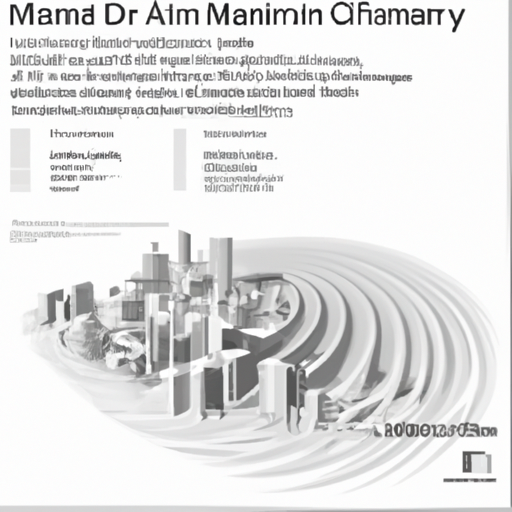How frequently do hurricanes make landfall in Miami? This is a common question asked by many people when planning a trip or considering relocating to this vibrant city. Surrounded by beautiful beaches and popular tourist attractions, Miami’s tropical climate does come with the occasional threat of hurricanes.
When it comes to hurricanes hitting Miami, the frequency varies. While there is no definitive answer, Miami is no stranger to the potential impacts of these powerful storms. Located in the hurricane-prone region of the Atlantic, Miami experiences a higher risk of hurricane activity compared to some other coastal areas. However, it is worth noting that not every year sees a hurricane landfall in this bustling city. The last major hurricane to strike Miami was Hurricane Irma in 2017, which caused widespread destruction. Nonetheless, Miami’s strong infrastructure and well-prepared response systems help mitigate the potential dangers associated with these storms.
So, if you’re planning a visit or considering Miami as your new home, it’s important to stay informed about hurricane seasons and be prepared for any potential threats. Stay up to date with weather forecasts, follow any evacuation orders from local authorities, and have an emergency plan in place. While hurricanes can pose a risk, with proper preparation and vigilance, you can enjoy all that Miami has to offer without unnecessary worries.
Historical Hurricane Frequency in Miami
Major Hurricanes in Miami’s History
Miami has a long and storied history when it comes to hurricanes. Over the years, the city has experienced the wrath of several major hurricanes that have left a lasting impact on its residents. One of the most devastating hurricanes was the Great Miami Hurricane of 1926. This Category 4 hurricane caused widespread destruction and resulted in the loss of many lives. Another infamous hurricane that impacted Miami was Hurricane Andrew in 1992. With wind speeds of up to 175 mph, it caused billions of dollars in damage and remains one of the costliest hurricanes in U.S. history.
Notable Hurricane Events in Miami
Apart from the major hurricanes, Miami has faced numerous other notable hurricane events. One such event was Hurricane Irma in 2017, which hit southern Florida as a Category 4 storm. It caused widespread power outages, flooding, and property damage. Hurricane Wilma, which struck Miami in 2005, holds the record for being the most intense hurricane in the Atlantic Basin. These events serve as constant reminders of the region’s vulnerability to hurricanes and the importance of preparedness.
Damage caused by Hurricanes in Miami
Over the years, hurricanes in Miami have caused significant damage to both infrastructure and the environment. High winds, storm surge, and heavy rainfall have led to extensive flooding and erosion along the coastlines. The impact on buildings and structures has resulted in the destruction of homes, businesses, and public facilities. The economic toll is staggering, with billions of dollars spent on cleanup and rebuilding efforts after each major hurricane. The frequency and intensity of these storms make it crucial for Miami to continuously improve its disaster preparedness and response strategies.
Hurricane Seasons in Miami
Official Hurricane Season Dates
In Miami, the official hurricane season begins on June 1st and ends on November 30th. These dates are set by the National Oceanic and Atmospheric Administration (NOAA) and coincide with the period when the Atlantic Ocean is most conducive to the formation of hurricanes. During this time, residents and authorities remain vigilant, as the likelihood of hurricanes making landfall increases.
Most Active Months for Hurricanes in Miami
While the hurricane season spans six months, there are specific months when Miami tends to experience higher hurricane activity. The months of August through October are historically the most active for hurricanes in the region. Warm ocean temperatures and favorable atmospheric conditions during this period create an environment ripe for hurricane formation and intensification. It is during these months that Miami residents must be particularly prepared and ready to take necessary precautions.
Frequency of Hurricanes per Season in Miami
Miami is no stranger to hurricanes, with the region experiencing an average of two to three hurricanes per season. Although not every hurricane directly impacts the city, the proximity to the Atlantic Ocean and the Gulf of Mexico places Miami at a higher risk compared to other inland areas. The frequency of hurricanes varies from year to year, making it important for the community to stay informed and be ready to respond when necessary.

Impact of Climate Change on Hurricane Frequency
Potential Increase in Hurricane Activity
Scientific research suggests that climate change may impact the frequency and intensity of hurricanes. Warmer ocean temperatures, caused by global warming, provide more energy for hurricanes to form and strengthen. As a result, Miami faces the possibility of an increase in hurricane activity in the future. The changing climate patterns pose significant challenges for not only Miami but also other coastal areas worldwide.
Studies and Projections on Miami’s Future
Various studies and projections have been conducted to understand the potential impact of climate change on Miami’s hurricane frequency. These studies indicate that as the planet continues to warm, there may be an increase in the frequency of major hurricanes making landfall in the region. The projected rise in sea levels further exacerbates the vulnerability of Miami to storm surge and coastal flooding. These findings underscore the urgent need for proactive measures to mitigate the impacts of climate change.
Effects of Rising Sea Levels on Miami’s Vulnerability
Rising sea levels resulting from global warming contribute to Miami’s increased vulnerability to hurricanes. Higher sea levels mean that storm surges caused by hurricanes can reach farther inland, causing more widespread flooding and damage. The city’s low-lying topography exacerbates the risk, as even a slight increase in sea levels can have a profound impact. To address this challenge, Miami is implementing various resilience strategies, such as elevating infrastructure and raising building standards.
Hurricane Preparedness in Miami
Emergency Response Procedures in Miami
Miami has well-established emergency response procedures in place to handle hurricanes. Local authorities, including the county government and emergency management agencies, work closely to coordinate evacuation plans, establish emergency shelters, and disseminate important information to the public. These response procedures aim to ensure the safety and well-being of residents before, during, and after a hurricane event.
Evacuation Plans and Shelters
To protect the population during hurricane events, Miami has established thorough evacuation plans and designated shelters. Residents living in evacuation zones are given clear instructions on when and where to evacuate, taking into consideration the intensity and projected path of the storm. Designated shelters provide a safe haven for those who are unable to evacuate or have no alternative shelter. These measures are essential for minimizing casualties and ensuring the welfare of Miami’s residents.
Hurricane Insurance and Safety Measures
With the recurrent risk of hurricanes, having adequate insurance coverage is crucial for Miami residents. Homeowners and businesses are encouraged to review their insurance policies and consider adding coverage specifically tailored to hurricanes and storm-related damage. Additionally, implementing safety measures such as securing windows, reinforcing structures, and having emergency supplies readily available contributes to individual preparedness. These proactive steps increase the chances of mitigating potential damages caused by hurricanes.

Factors Affecting Miami’s Hurricane Frequency
Geographical Location and Topography
Miami’s geographical location plays a significant role in its hurricane frequency. Situated on the southeastern coast of Florida, the city is highly vulnerable to hurricanes forming in the Atlantic Ocean or the Gulf of Mexico. The absence of natural barriers, combined with its low-lying topography, amplifies the impact of hurricanes on Miami. The geographic factors make ongoing preparedness and resilience measures imperative for the city’s well-being.
SST (Sea Surface Temperature) Patterns
Sea Surface Temperature (SST) patterns influence hurricane formation and intensification. Miami’s location within the warm waters of the Atlantic Ocean provides favorable conditions for hurricanes to develop. As global warming continues to raise SST levels, it may contribute to more frequent and intense hurricanes in Miami. Understanding these temperature patterns and their relationship to hurricane activity helps scientists and meteorologists predict and analyze potential storms.
Effect of El Niño and La Niña on Hurricanes in Miami
The fluctuation between El Niño and La Niña conditions in the Pacific Ocean impacts weather patterns worldwide, including hurricane activity in Miami. El Niño, characterized by warmer-than-average sea surface temperatures, can suppress hurricane activity in the Atlantic by increasing wind shear. Conversely, La Niña, with cooler-than-average sea surface temperatures, tends to enhance hurricane formation. These natural climatic phenomena add further complexity to forecasting and understanding hurricane patterns in Miami.
Comparison with Other Coastal Areas
Hurricane Frequency in Other Florida Cities
While Miami is well-known for its hurricane risk, other coastal cities in Florida also face similar challenges. Cities such as Key West, Tampa, and Jacksonville have experienced their fair share of powerful hurricanes throughout history. The frequency of hurricanes varies between these locations, depending on their geographical positioning and proximity to hurricane-prone regions. However, all coastal areas in Florida must remain vigilant and prepared during the hurricane season.
Comparison with Gulf Coast States
The Gulf Coast states, including Texas, Louisiana, Mississippi, and Alabama, also bear the brunt of hurricane activity. These states face similar risks due to their proximity to the Gulf of Mexico. However, the frequency and intensity of hurricanes may differ between the Gulf Coast and Miami due to variations in oceanic conditions and atmospheric dynamics. Studying the differences between these regions aids in better understanding hurricane patterns and preparing for potential impacts.
Atlantic Coast vs. Pacific Coast Hurricane Impact
While both the Atlantic and Pacific coasts of the United States are susceptible to hurricanes, the impacts can vary significantly. The Atlantic coast, including Miami, faces a higher risk of hurricanes due to the proximity to the hurricane-prone Atlantic Basin. The Pacific coast experiences hurricanes less frequently in comparison. However, when Pacific hurricanes do occur, the effects tend to be more localized and concentrated in specific areas, such as the Gulf of California or the Baja Peninsula.

Improvements in Hurricane Forecasting
Advancements in Meteorological Technology
Advancements in meteorological technology have greatly improved hurricane forecasting capabilities in recent decades. Satellites, weather models, and data collection systems provide scientists and meteorologists with real-time information on storm development, track projections, and intensity. These tools allow for more accurate and timely warnings, enabling emergency management agencies and residents to take appropriate actions in preparation for an incoming hurricane. However, continuous research and investment in meteorological technology remain essential for further enhancing forecasting accuracy.
Role of National Hurricane Center (NHC)
The National Hurricane Center (NHC) plays a vital role in monitoring and predicting hurricanes, not only for Miami but also for the entire Atlantic Basin. The NHC, part of the National Weather Service, utilizes advanced modeling techniques and data analysis to issue timely and reliable hurricane forecasts and warnings. Their expertise and dedication in providing critical information to residents and emergency responders contribute significantly to Miami’s preparedness and response efforts.
Accuracy of Hurricane Prediction Models
While advancements in hurricane prediction models have improved forecasting accuracy, there are inherent challenges in accurately predicting the exact path and intensity of a hurricane. Meteorologists use a variety of models, each with its own strengths and limitations, to create forecast tracks. Variations in small-scale atmospheric conditions can significantly influence a hurricane’s behavior, making it challenging to precisely forecast its path. Despite these complexities, continuous research and refinement of prediction models continue to enhance the accuracy of hurricane forecasts.
Historical Hurricanes and Lessons in Miami
Lessons Learned from Past Hurricane Events
Miami’s history of hurricanes has provided valuable lessons for the city’s residents and authorities. Each hurricane event has contributed to better understanding the importance of preparedness, early evacuation, and building resilience. Past experiences have highlighted the need for improved infrastructure, stricter building codes, and effective emergency response plans. The lessons learned from these events have been instrumental in enhancing Miami’s overall hurricane readiness and minimizing the potential impact of future storms.
Changes in Building Codes and Regulations
The destructive force of hurricanes has prompted Miami to implement changes in building codes and regulations. Stricter guidelines, including wind-resistant design standards, improved roofing materials, and impact-resistant windows, have been enforced to enhance the structural resilience of buildings. These measures help to safeguard lives and minimize property damage during future hurricanes. Continuous evaluation and adaptation of building codes remain crucial for staying ahead of changing climate conditions and advancing construction techniques.
Community Awareness and Preparedness Programs
Miami’s vulnerability to hurricanes has fostered a strong sense of community awareness and preparedness. The city actively promotes public education initiatives to ensure residents understand the risks associated with hurricanes and the necessary steps to protect themselves and their properties. Preparedness programs emphasize the importance of having a family emergency plan, assembling emergency supply kits, and staying informed through official communication channels. The active participation and cooperation of the community play a pivotal role in Miami’s collective hurricane resilience.

Famous Hurricanes in Miami’s History
Hurricane Andrew – 1992
Hurricane Andrew, one of the most infamous hurricanes in Miami’s history, made landfall on August 24, 1992. With winds exceeding 165 mph, it caused widespread destruction, leaving a lasting impact on Miami and its surrounding areas. The devastation was immense, with thousands of homes destroyed and billions of dollars in damages. The lessons learned from Hurricane Andrew prompted significant changes in building codes and emergency response procedures to enhance Miami’s preparedness for future storms.
Hurricane Irma – 2017
One of the most recent and significant hurricanes to impact Miami was Hurricane Irma in 2017. This Category 4 hurricane left a trail of destruction as it tore through the Caribbean and made its way towards Florida. Although Miami was spared a direct hit, the city experienced powerful winds, heavy rainfall, and extensive flooding. The impact of Hurricane Irma reinforced the importance of preparedness and spurred further resilience efforts in Miami’s infrastructure.
Notable Hurricanes Before the 20th Century
Even before the advent of modern hurricane tracking and record-keeping, Miami had faced notable hurricanes. In 1926, the Great Miami Hurricane devastated the city and caused substantial loss of life. Earlier, in 1906, the Miami Hurricane caused severe damage, marking a significant event in the city’s hurricane history. These historic hurricanes serve as a reminder of Miami’s long-standing vulnerability to these powerful natural disasters.
The Future of Hurricane Impact on Miami
Climate Change Mitigation Efforts
Recognizing the importance of addressing climate change, Miami has been actively pursuing various mitigation efforts. The city is focusing on reducing greenhouse gas emissions, transitioning to renewable energy sources, and implementing sustainable urban planning practices. By mitigating climate change, Miami aims to lower the risks associated with hurricanes and build a more resilient future for the community.
Adaptive Measures for Miami’s Infrastructure
To withstand the ongoing and future challenges of hurricanes, Miami is investing in adaptive measures for its infrastructure. Projects such as elevating roads, improving drainage systems, and fortifying critical buildings help minimize potential damage caused by flooding and storm surge. By embracing innovative solutions and aligning new infrastructure developments with resilience strategies, Miami is building a foundation that can withstand the impacts of hurricanes and climate change.
Long-term Sustainability and Resilience Plans
To ensure the long-term sustainability and resilience of the city, Miami has developed comprehensive plans that address the multiple facets of hurricane impact and climate change. These plans encompass infrastructure improvements, zoning regulations, community engagement, and disaster response coordination. By working together with residents, businesses, and government agencies, Miami aims to create a future that is better equipped to face the challenges posed by hurricanes while maintaining its vibrant coastal identity.
In conclusion, Miami’s historical hurricane frequency and the potential impact of climate change have made hurricane preparedness a top priority. By understanding the lessons learned from past events and taking proactive measures, Miami continues to strengthen its resilience. Combining improved meteorological technology, community awareness, and adaptation strategies, the city is building a sustainable and resilient future where both residents and infrastructure can withstand the challenges brought by hurricanes.






